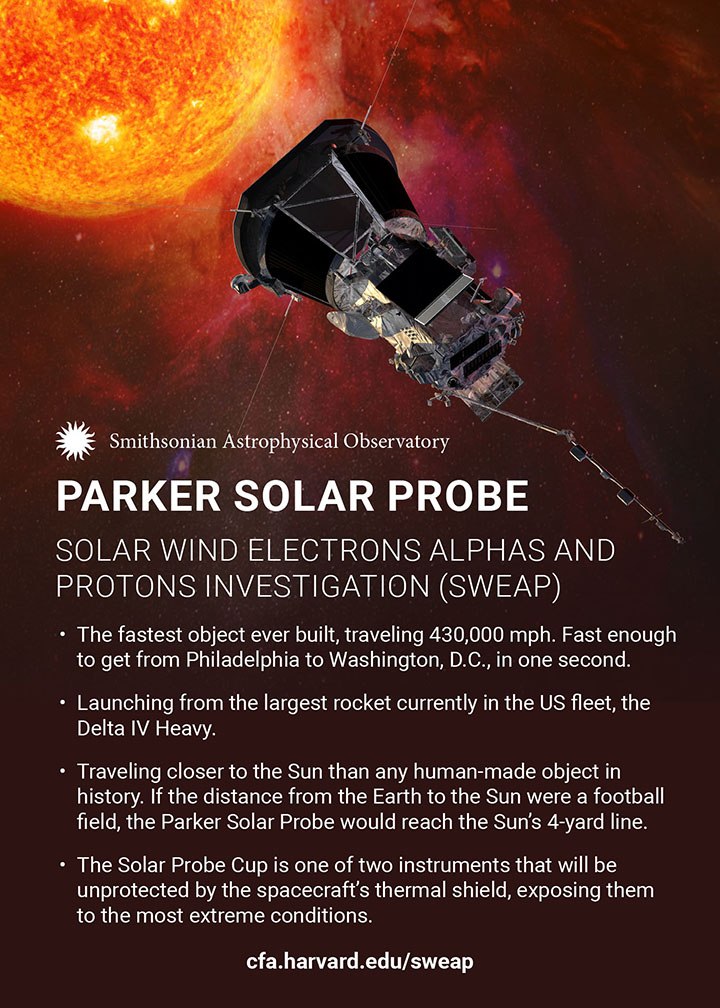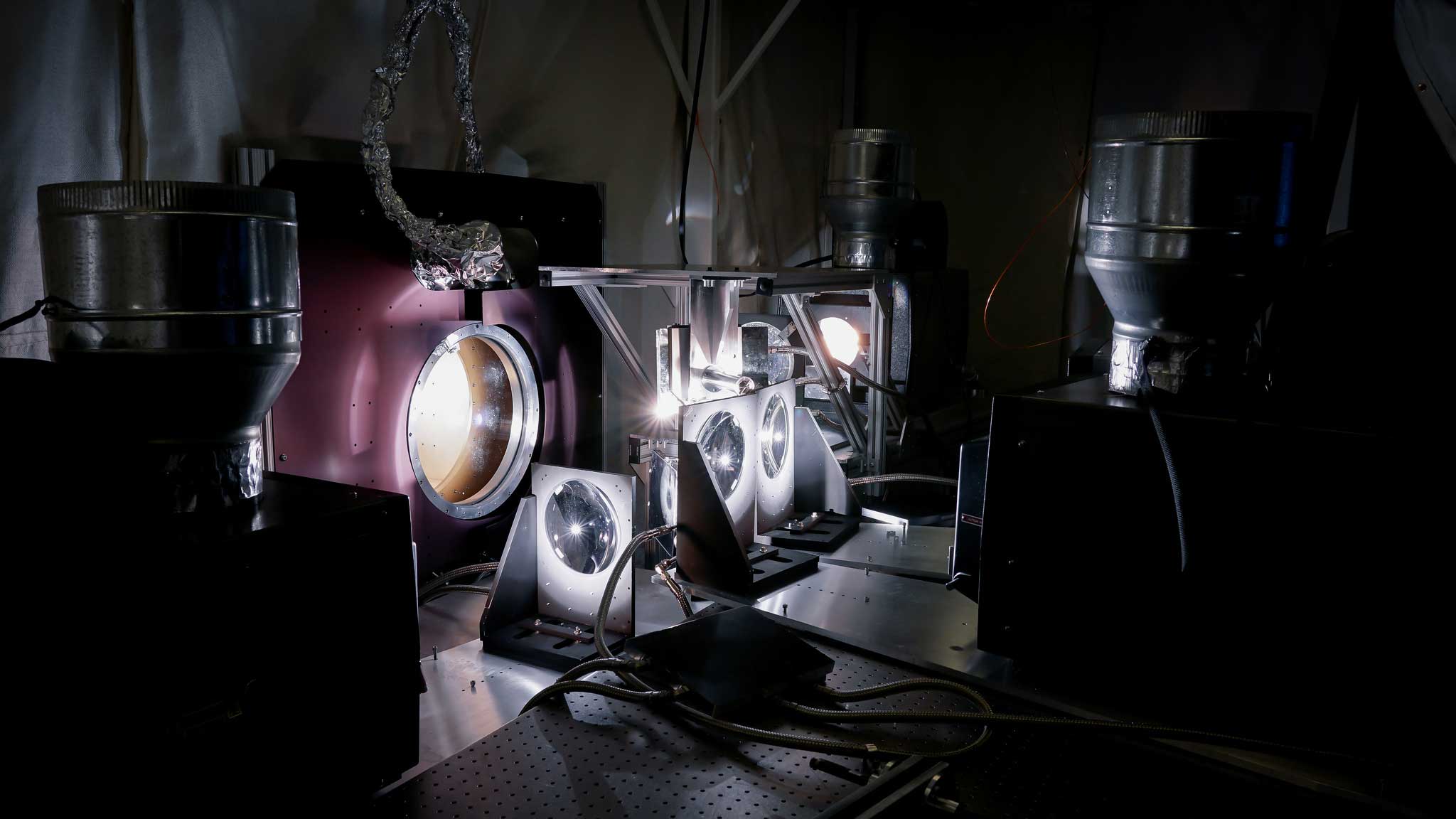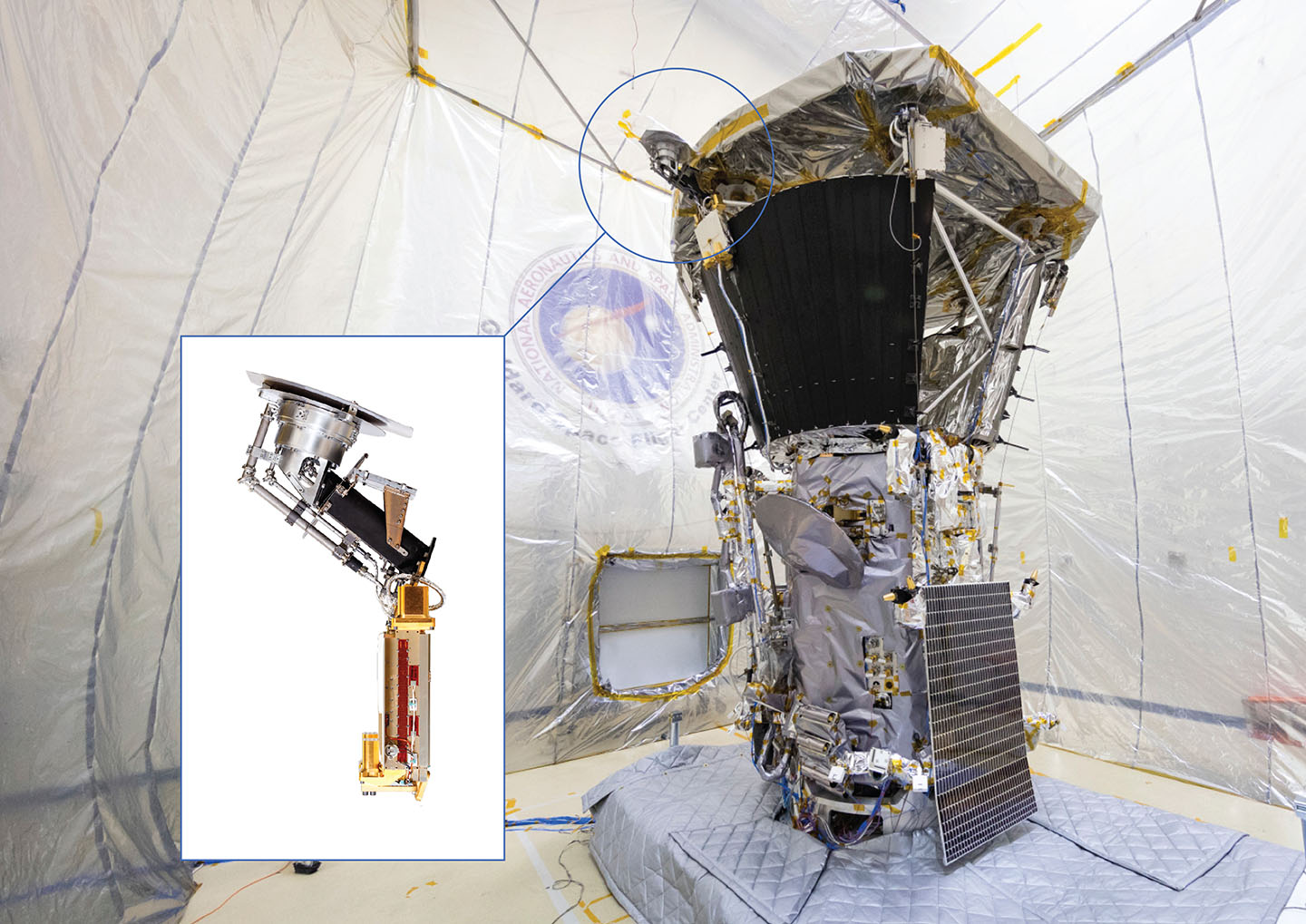Image List
-

This one page document gives some key facts about the Parker Solar Probe. Its Solar Probe Cup was built at the Smithsonian Astrophysical Observatory.
Credit: SAO -

Researchers use a quartet of IMAX projectors to create the light and heat the Parker Solar Probe cup will experience during its trips through the sun's atmosphere. The cup sits inside a vacuum chambers set up in a lab at the Smithsonian Astrophysical Observatory in Cambridge, Massachusetts.
Credit: Levi Hutmacher, University of Michigan Engineering -

PSP in the clean room, with a close-up view of the SPC in the inset. The location of the SPC on the probe, as it peers around the heat shield, is also shown.
Credit: PSP: NASA/John Hopkins APL/Ed Whitman; SPC: Smithsonian Astrophysical Observatory/Tony Case -

Getting ready to put the Solar Probe Cup (SPC) on the Parker Solar Probe (PSP)! Pictured left to right: Chris Scholz (University of California Berkeley), Anthony (Tony) Case (Smithsonian Astrophysical Observatory, SPC Instrument Scientist), Kelly Korreck (Smithsonian Astrophysical Observatory, SWEAP Head of Science Operations)
Credit: http://www.andrewtakesphotos.com